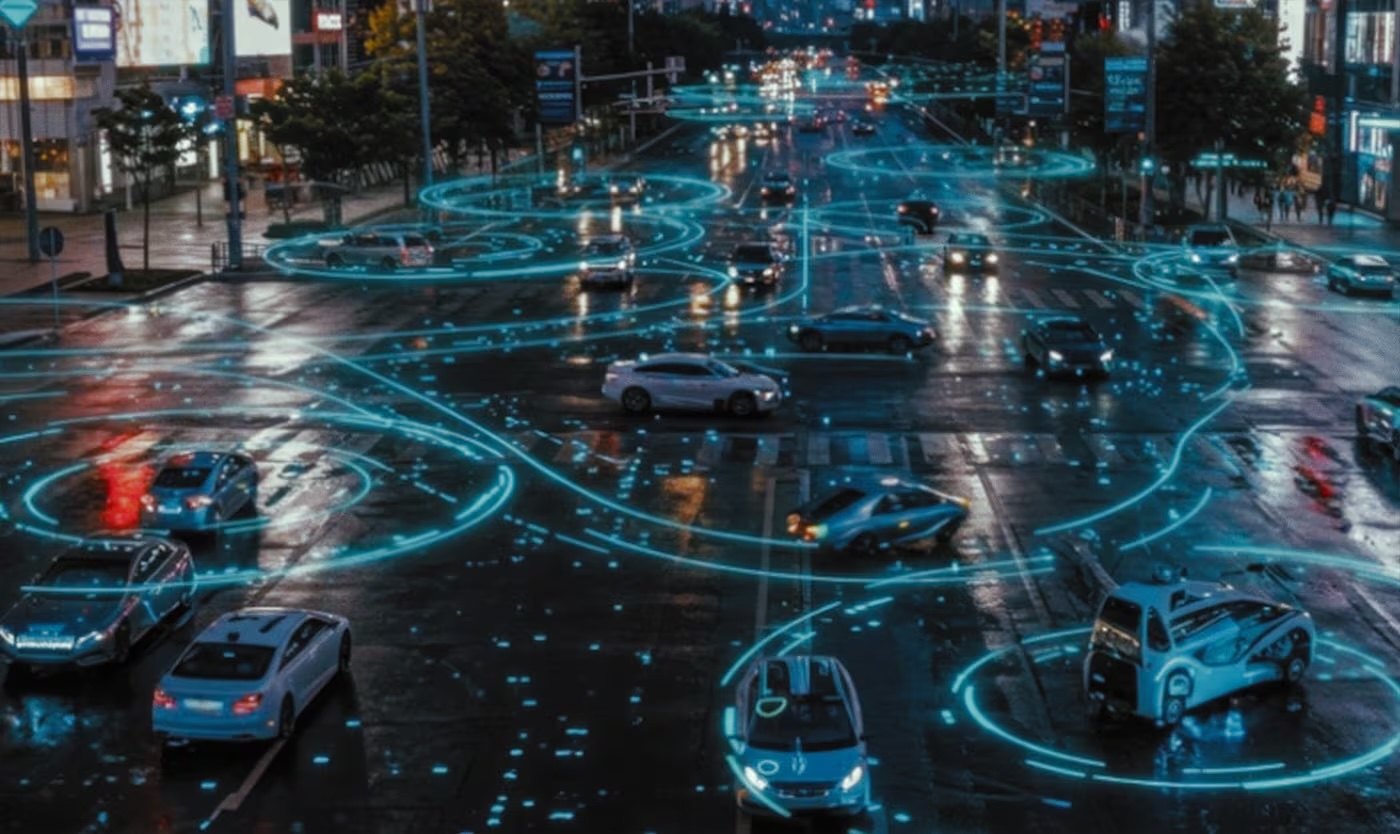Transform sensor chaos into strategic foresight

Real-World Scenarios Hiding in Your Sensor Data
Smart City Example: Traffic Safety
Barcelona's smart city initiative discovered that certain intersections had 3x more near-miss incidents during rush hour by analyzing traffic sensor data. Traditional accident reports showed nothing unusual because no collisions occurred. By identifying these "invisible" scenarios, they prevented 40% of potential accidents through targeted interventions.
Building Management Example: Energy Optimization
A Frankfurt office complex used Scenario Intelligence to analyze HVAC, occupancy, and weather sensor data. They discovered that conference rooms were being cooled for 3 hours after meetings ended, but only on Tuesdays and Thursdays. The pattern? Cleaning staff were propping doors open. Simple scenario detection saved €120,000 annually.
Automotive Example: Predictive Maintenance
A fleet operator managing 5,000 delivery vehicles discovered that vehicles making more than 50 stops daily in urban areas developed brake issues 40% faster. By detecting this scenario pattern, they adjusted maintenance schedules and reduced breakdowns by 60%.
The Challenge: From Data Streams to Decisions
Volume Overwhelm
- Modern buildings: 250,000+ data points per day
- Connected vehicles: 25GB of data per hour
- Smart cities: Millions of events per minute
Pattern Blindness
Human analysts can track 5-7 variables simultaneously. Real scenarios emerge from hundreds of interrelated factors that only AI can detect.
Context Vacuum
Raw sensor data lacks business context. A temperature spike means nothing without knowing if it's a server room or a storage closet.
How Context64.ai's Scenario Intelligence Transforms Raw Data
Intelligent Scenario Extraction
Our platform doesn't just collect data – it understands what matters:
- Pattern Recognition: Automatically identifies recurring scenarios across millions of data points
- Anomaly Detection: Spots unusual combinations of events before they become problems
- Predictive Scenarios: Forecasts likely future events based on current patterns
Multi-Source Context Fusion
Scenario Intelligence connects:
- IoT sensors and building management systems
- Vehicle telematics and traffic data
- Weather and environmental sensors
- Operational schedules and business events
- Historical incident reports
Real-Time Scenario Alerts
Transform reactive operations into proactive management:
- "Elevator 3 showing early signs of motor wear pattern"
- "Intersection B2 congestion will cascade to main arterial in 15 minutes"
- "Conference room energy usage 40% above normal for current occupancy"
Industry Applications
Smart Cities
Traffic Flow Optimization
- Detect accident-prone scenarios before crashes occur
- Identify optimal signal timing for different traffic patterns
- Predict parking availability based on event schedules
Public Safety
- Recognize crowd formation patterns at events
- Detect environmental hazards (flooding, air quality)
- Coordinate emergency response based on real scenarios
Intelligent Buildings
Energy Management
- Identify wasteful usage patterns
- Optimize HVAC based on actual occupancy scenarios
- Predict equipment failures before they occur
Security & Safety
- Detect unusual access patterns
- Identify evacuation bottlenecks
- Monitor environmental conditions comprehensively
Connected Mobility
Fleet Management
- Predict vehicle maintenance needs by usage patterns
- Optimize routes based on real traffic scenarios
- Reduce fuel consumption through pattern analysis
ADAS Development
- Extract critical driving scenarios from test fleets
- Validate autonomous vehicle behavior
- Build comprehensive scenario libraries for simulation
The Context64.ai Advantage
From Detection to Action
Our M4AI agents don't just identify scenarios – they recommend actions:
- Automatic work order generation for maintenance scenarios
- Dynamic traffic rerouting suggestions
- Energy optimization commands to building systems
Scalable Architecture
- Start with one building or intersection
- Expand to entire districts or fleets
- Federated architecture maintains local control
Privacy-Preserving Analytics
- Process data locally when required
- Share only aggregated insights
- Full GDPR compliance built-in
Getting Started
Phase 1: Pilot (2-3 months)
- Select high-value area (building, intersection, fleet segment)
- Connect 3-5 key sensor types
- Identify first actionable scenarios
Phase 2: Expansion (6 months)
- Scale to full building/district/fleet
- Add additional sensor types
- Implement automated responses
Phase 3: Intelligence (12 months)
- Cross-domain scenario correlation
- Predictive scenario modeling
- City-wide or enterprise deployment
ROI Metrics
- Incident Reduction: 40-60% fewer safety incidents
- Energy Savings: 20-30% reduction in consumption
- Operational Efficiency: 50% faster response times
- Maintenance Costs: 35% reduction through prediction



